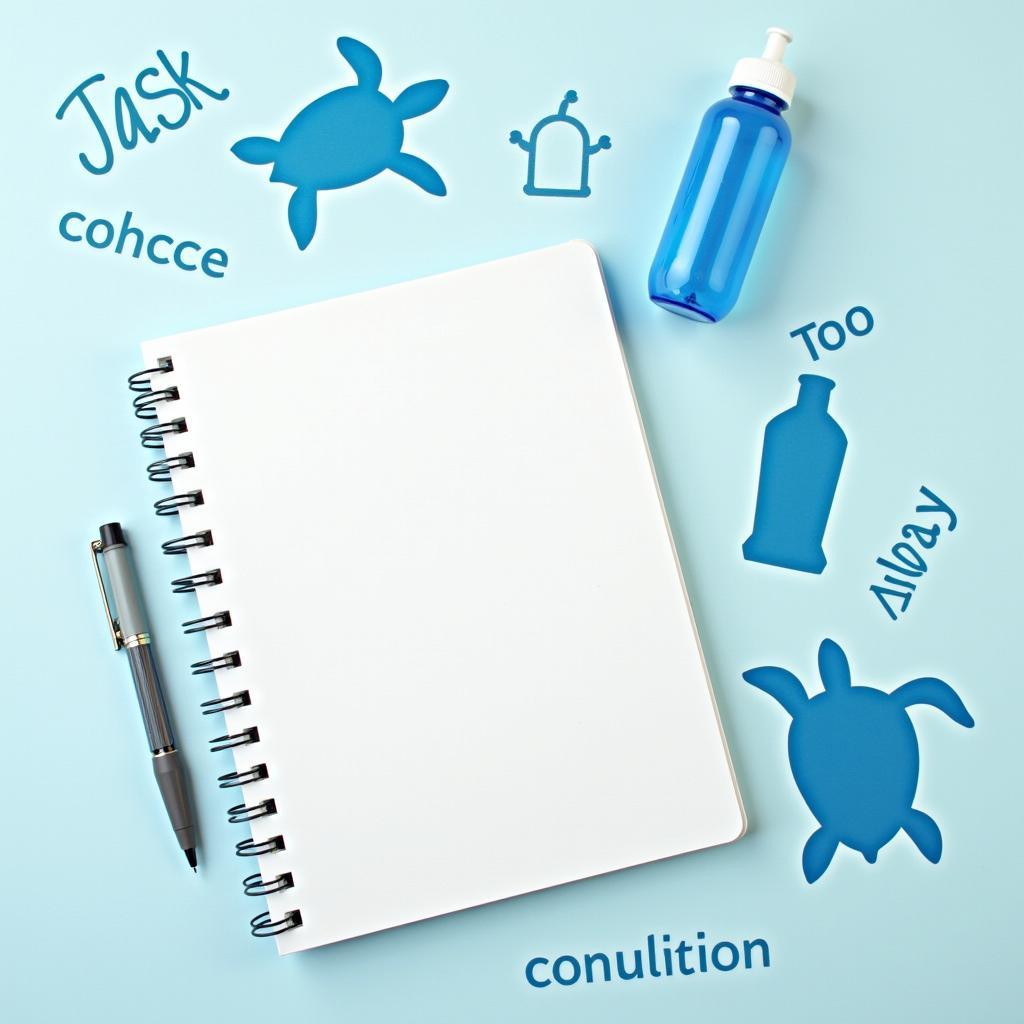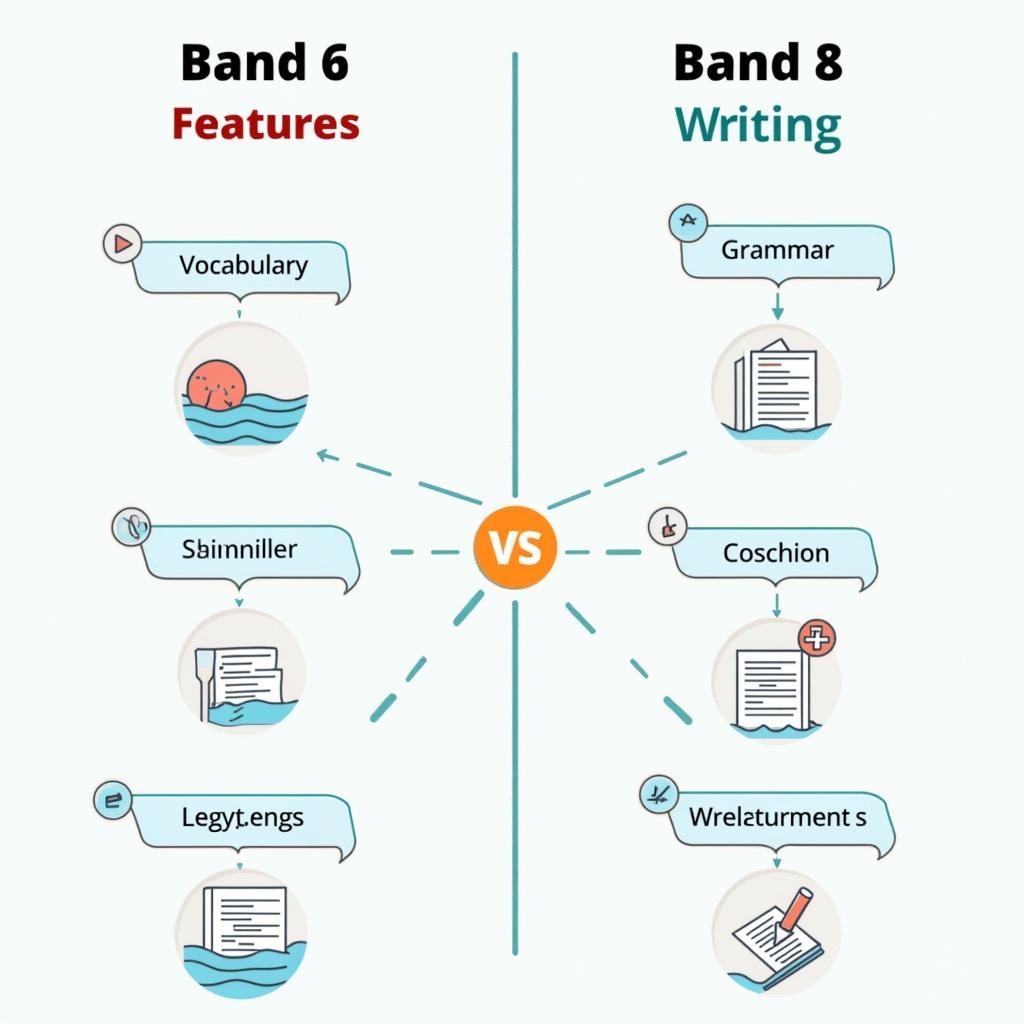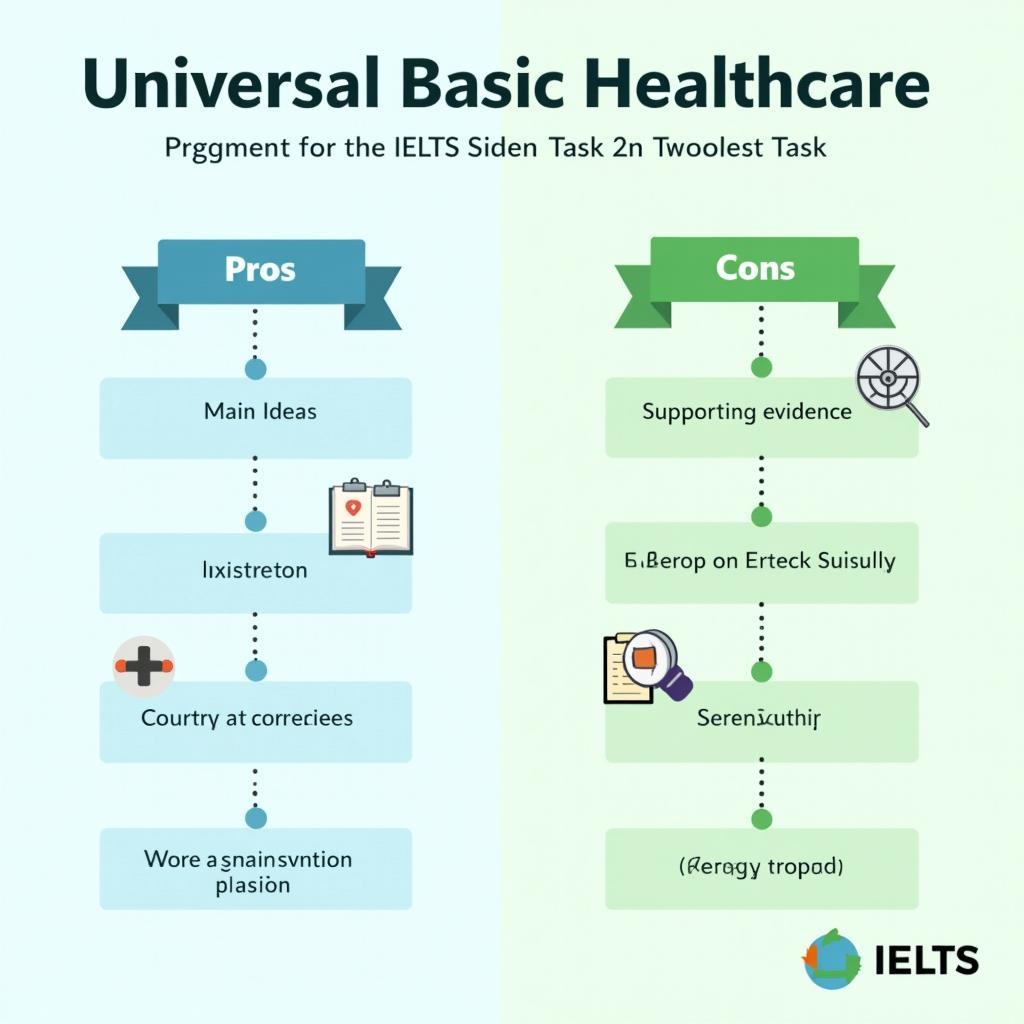Mở bài
Trong 20+ năm dạy Writing, tôi thấy chủ đề môi trường – đặc biệt là Importance Of Reducing Plastic Waste To Save Marine Life – xuất hiện đều đặn trong IELTS Writing Task 2 dưới nhiều biến thể: vấn đề–giải pháp, đồng ý/không đồng ý, hay lợi–hại. Chủ đề này phù hợp với tiêu chí đánh giá vì đòi hỏi tư duy logic, vốn từ học thuật, và khả năng phát triển luận điểm có ví dụ thực tiễn. Trong bài viết này, bạn sẽ học được: 3 bài mẫu (Band 5-6, 6.5-7, 8-9), phân tích chấm điểm theo 4 tiêu chí, từ vựng–cấu trúc câu ghi điểm cao, cùng checklist viết trong 40 phút.
Nội dung bài viết
- 1. Đề Bài và Phân Tích
- 2. Bài mẫu Band 8-9
- Phân tích Band điểm
- Các yếu tố giúp bài này được chấm điểm cao
- 3. Bài mẫu Band 6.5-7
- Phân tích Band điểm
- So sánh với bài Band 8-9
- 4. Bài mẫu Band 5-6
- Phân tích Band điểm
- Những lỗi sai của bài – phân tích & giải thích
- Cách Cải Thiện Từ Band 6 Lên Band 7
- 5. Từ vựng quan trọng cần nhớ
- 6. Cấu trúc câu dễ ăn điểm cao
- 7. Checklist Tự Đánh Giá
Các đề thi/đề luyện đã được xác minh:
- IELTS Liz (practice question): “Plastic bags, bottles and packaging are bad for the environment. What damage does plastic do to the environment and what can be done by governments and individuals to solve this problem?”
- IELTS-Blog (reported question): “Some people think single-use plastics should be completely banned to protect the environment. To what extent do you agree or disagree?”
- British Council LearnEnglish (sample topic on environmental problems/solutions): Vấn đề ô nhiễm nhựa và giải pháp ở cấp cá nhân–chính phủ.
 Hình minh họa tầm quan trọng giảm rác nhựa để cứu sinh vật biển
Hình minh họa tầm quan trọng giảm rác nhựa để cứu sinh vật biển
1. Đề Bài và Phân Tích
Plastic pollution in the oceans has become a pressing concern worldwide. What problems does it cause to marine life and what measures should be taken to address this issue?
Dịch đề: [Ô nhiễm nhựa ở đại dương đã trở thành một mối lo ngại cấp bách trên toàn cầu. Những vấn đề nào nó gây ra cho sinh vật biển và cần có những biện pháp nào để giải quyết vấn đề này?]
Phân tích đề bài:
- Dạng câu hỏi: Problems–Solutions (2 phần rõ ràng: Problems + Solutions). Cần cân đối dung lượng 1:1 hoặc 2:1 tùy chiến lược.
- Thuật ngữ quan trọng:
- Marine life: sinh vật biển (cá, rùa, san hô, động–thực vật biển).
- Single-use plastics: nhựa dùng một lần (ống hút, túi, bao bì).
- Microplastics: vi nhựa (mảnh nhựa <5mm).
- Entanglement/Ingestion: mắc kẹt/nuốt phải.
- Lỗi thường gặp:
- Lạc đề sang ô nhiễm nói chung, không tập trung “biển” hoặc “sinh vật biển”.
- Chỉ liệt kê mà không giải thích cơ chế (vì sao nhựa gây chết rùa/cá?).
- Giải pháp quá chung chung: “nâng cao nhận thức” nhưng thiếu cách triển khai, tác nhân, kết quả dự kiến.
- Ngôn ngữ chung chung, thiếu collocations học thuật; sai mạo từ (a/the), giới từ (harm to, impact on).
- Cách tiếp cận chiến lược:
- Dàn ý 4 đoạn: Mở – Problems (2 ý sâu) – Solutions (2 tầng: chính phủ + cá nhân/doanh nghiệp) – Kết.
- Sử dụng causal chains (chuỗi nguyên nhân–hệ quả) và evidence types (dẫn chiếu khoa học, case studies).
- Kết hợp từ vựng học thuật: mitigate, phase out, enforce, stakeholder, circular economy.
 Sơ đồ phân tích đề problems–solutions về rác nhựa và sinh vật biển
Sơ đồ phân tích đề problems–solutions về rác nhựa và sinh vật biển
2. Bài mẫu Band 8-9
Bài Band 8-9 thường thể hiện: lập luận rõ ràng, phát triển logic sâu, ví dụ cụ thể, từ vựng học thuật tự nhiên, liên kết mượt, ngữ pháp đa dạng.
Essay (290–310 words):
While plastic has underpinned modern convenience, its unchecked proliferation in the oceans is exacting an unacceptable toll on marine ecosystems. The most immediate harm is physical. Sea turtles and seabirds are routinely entangled in drifting nets and packaging bands, which restrict movement, cause lacerations, and ultimately lead to starvation. Equally insidious is ingestion: filter feeders such as whales and plankton inadvertently consume microplastics, mistaking them for prey, thereby introducing persistent toxins into the marine food web and, by extension, into the human diet.
Beyond direct mortality, plastic pollution destabilises entire ecosystems. Floating debris transports invasive species across oceans, outcompeting native organisms and damaging coral reefs already stressed by warming waters. Moreover, as plastics fragment, their increased surface area accelerates chemical adsorption, turning them into vectors for pollutants that magnify up the trophic levels.
Addressing this crisis requires a two-pronged strategy that tackles both supply and demand. On the supply side, governments should phase out single-use plastics through bans, levies, and extended producer responsibility schemes, compelling manufacturers to redesign products for durability and recyclability. Enforcement must be coupled with infrastructure: investing in waste collection in coastal regions and funding innovative materials that biodegrade in marine conditions. On the demand side, public procurement and consumer nudges can shift norms—deposit-return schemes for bottles, default “no cutlery” settings on delivery apps, and price signals that reflect the true environmental cost.
Critically, success hinges on international coordination. Ocean currents do not recognise borders, so treaties that harmonise standards, share technology, and finance waste management in developing nations are indispensable. If policy ambition is matched by systemic design and civic participation, we can bend the plastic curve and give marine life the chance to recover.
Phân tích Band điểm
| Tiêu chí | Band | Nhận xét |
|---|---|---|
| Task Response (Hoàn thành yêu cầu) | 8.5 | Trả lời đầy đủ 2 phần: nêu rõ cơ chế gây hại và giải pháp nhiều tầng (chính sách, hạ tầng, hành vi, hợp tác quốc tế). Luận điểm nhất quán, có đánh giá mức độ ưu tiên. |
| Coherence & Cohesion (Mạch lạc & Liên kết) | 8.5 | Cấu trúc 4 đoạn rõ ràng; sử dụng logical sequencing và topic sentences mạnh. Liên kết nguyên nhân–kết quả mượt; từ nối tự nhiên, không lạm dụng. |
| Lexical Resource (Từ vựng) | 8.5 | Phạm vi rộng: entangled, filter feeders, trophic levels, levies, procurement, harmonise. Collocations chuẩn: phase out single-use plastics, extended producer responsibility. Từ chọn lọc chính xác. |
| Grammatical Range & Accuracy (Ngữ pháp) | 8.0 | Đa dạng cấu trúc: mệnh đề quan hệ, cụm phân từ, câu điều kiện ẩn, đảo ngữ nhẹ qua nhấn mạnh. Lỗi hầu như không có; dấu câu hợp lý. |
Các yếu tố giúp bài này được chấm điểm cao
- Giải thích cơ chế gây hại cụ thể (entanglement, ingestion, chemical adsorption), không chỉ liệt kê.
- Kết nối vấn đề vi mô (loài cụ thể) với hệ sinh thái và sức khỏe con người.
- Giải pháp đa tầng: pháp lý, kinh tế, hạ tầng, hành vi, hợp tác quốc tế.
- Collocations học thuật tự nhiên: phase out, deposit-return schemes, extended producer responsibility.
- Dẫn chứng theo logic chính sách: supply vs demand, internalising externalities.
- Tính mạch lạc cao: mỗi đoạn một chức năng; câu chủ đề rõ, phát triển có chiều sâu.
- Ngôn ngữ chuẩn xác, không màu mè; kiểm soát sắc thái và mức độ chắc chắn.
3. Bài mẫu Band 6.5-7
Đặc điểm: ý rõ, có ví dụ thực tế, từ vựng đủ dùng, đôi khi lặp từ hoặc liên kết còn đơn điệu; ngữ pháp có lỗi nhẹ nhưng không gây hiểu lầm.
Essay (255–275 words):
Plastic waste in the ocean is damaging marine life in several ways. First, animals are trapped by plastic items such as fishing nets and rings from bottles, which stops them from swimming and searching for food. Second, many species eat plastic because it looks like food. For instance, turtles may confuse plastic bags with jellyfish. When this happens, the animals feel full but get no nutrition, and this can lead to illness or death.
To solve these problems, action should be taken by governments, companies and individuals. Governments can ban or tax single-use plastics so that supermarkets and restaurants use alternatives like paper or reusable containers. They should also invest in better waste collection, especially in coastal areas where rubbish easily enters the ocean. At the same time, companies need to redesign packaging and take responsibility for what they produce. Clear labels and deposit systems for bottles would encourage people to return items instead of throwing them away.
Individuals can also help. If people bring their own bottles and bags, and refuse disposable cutlery, demand will decrease. Education campaigns can change habits, and social pressure can make “no plastic” the normal choice. While these measures will not remove all plastic from the sea immediately, combining them consistently can reduce the flow of waste and protect marine life over time.
Phân tích Band điểm
| Tiêu chí | Band | Nhận xét |
|---|---|---|
| Task Response (Hoàn thành yêu cầu) | 7.0 | Trả lời đủ hai phần; có ví dụ cụ thể (turtle–jellyfish). Kết luận thực tế nhưng chưa có lập luận chuyên sâu về cơ chế hóa học hay hệ sinh thái. |
| Coherence & Cohesion (Mạch lạc & Liên kết) | 7.0 | Bố cục rõ; từ nối đơn giản (first, second, also). Một số ý còn song song, chưa có bước lập luận nâng cao (nguyên nhân sâu xa–hệ quả dài hạn). |
| Lexical Resource (Từ vựng) | 6.5 | Từ vựng đủ dùng; có collocations cơ bản (ban or tax, deposit systems). Thiếu thuật ngữ chuyên sâu; đôi chỗ lặp “plastic”. |
| Grammatical Range & Accuracy (Ngữ pháp) | 6.5 | Câu ghép/phức cơ bản; ít lỗi, nhưng cấu trúc chưa đa dạng. Cần thêm mệnh đề quan hệ, cụm phân từ, và cấu trúc nhấn mạnh. |
So sánh với bài Band 8-9
- Độ sâu lý giải: Band 8-9 mô tả chuỗi nguyên nhân–hệ quả (trophic levels, adsorption), còn Band 7 dừng ở hiện tượng.
- Phạm vi giải pháp: Band 8-9 có khung “supply–demand–international”, Band 7 tập trung cấp quốc gia/cá nhân.
- Từ vựng: Band 8-9 dùng thuật ngữ chính xác và collocations nâng cao; Band 7 thiên về từ phổ thông.
- Ngữ pháp: Band 8-9 đa dạng cấu trúc; Band 7 thiên về câu đơn/câu ghép.
4. Bài mẫu Band 5-6
Đặc điểm: ý còn chung chung, phát triển chưa đều, lặp từ, lỗi ngữ pháp rõ; vẫn hiểu được nội dung.
Essay (255–265 words) – lỗi sai được làm nổi bật:
Plastic is very bad for sea animals. Many fish and turtles eat plastic because it look like food, and they dead after that. Also, there are many plastic in the ocean like bottles and bags, which make the water dirty and the animals cannot live good. People throw rubbish to the sea and ships also drop waste, so the problem is more worse.
To fix this problem, government should ban plastic. If there is no plastic, the ocean will be clean again very fast. Company must pay money for make plastic, and people should not use it. We can use paper or glass for everything. Education is very important because people don’t know how plastic is dangerous. Schools and TV should tell them more. And we can do beach clean also.
In conclusion, plastic is harmful and we need to stop it quickly. If everyone do the same action, the ocean and marine life will safe. I believe this is possible if we try hard and not give up.
Phân tích Band điểm
| Tiêu chí | Band | Nhận xét |
|---|---|---|
| Task Response (Hoàn thành yêu cầu) | 5.5 | Nêu vấn đề và giải pháp nhưng quá chung, thiếu chi tiết khả thi; có khẳng định cực đoan (ban hoàn toàn) không phân tích. |
| Coherence & Cohesion (Mạch lạc & Liên kết) | 5.5 | Liên kết yếu, lặp từ; thiếu sắp xếp logic (tác nhân–giải pháp–tác động). Câu chủ đề chưa rõ. |
| Lexical Resource (Từ vựng) | 5.5 | Lặp từ “plastic”, “ocean”; dùng sai collocations; ít từ học thuật. |
| Grammatical Range & Accuracy (Ngữ pháp) | 5.0 | Lỗi chia thì, số ít/số nhiều, tính từ–trạng từ; cấu trúc câu đơn giản. |
Những lỗi sai của bài – phân tích & giải thích
| Lỗi sai | Loại lỗi | Sửa lại | Giải thích |
|---|---|---|---|
| eat plastic because it look like food | Chia động từ | eat plastic because it looks like food | Chủ ngữ số ít “it” → động từ ở ngôi 3 số ít “looks”. |
| they dead | Từ loại | they die / they are dead | “Dead” là tính từ; cần động từ “die” hoặc cấu trúc “are dead”. |
| many plastic | Danh từ đếm được | much plastic / a lot of plastic | “Plastic” là danh từ không đếm được. |
| cannot live good | Trạng từ | cannot live well | Dùng trạng từ “well” để bổ nghĩa cho “live”. |
| more worse | So sánh | worse | Không dùng “more” với so sánh hơn của “worse”. |
| Company must pay money for make plastic | Dạng động từ | Companies must pay money for making plastic / to make | Sau “for” dùng V-ing; hoặc “to make” nêu mục đích. “Company” → số nhiều. |
| Education is very important because people don’t know how plastic is dangerous | Cấu trúc | … don’t know how dangerous plastic is | Trật tự từ trong mệnh đề danh ngữ; “how + adj + S + V”. |
| If everyone do the same action | Chia động từ | If everyone does the same | “Everyone” là số ít → “does”; “the same” là đủ, không cần “action”. |
| will safe | Từ loại | will be safe | Cần động từ “be” trước tính từ “safe”. |
Cách Cải Thiện Từ Band 6 Lên Band 7
- Tập trung “biển” và “sinh vật biển” (ví dụ cụ thể: turtles, seabirds, coral reefs), tránh lan man sang rác thải đô thị chung chung.
- Thêm cơ chế: entanglement, ingestion, microplastics–bioaccumulation; giải pháp gắn công cụ chính sách: tax, ban, deposit-return, extended producer responsibility.
- Nâng cấp collocations: phase out, curb consumption, enforce compliance, scale up waste collection.
- Đa dạng cấu trúc câu: mệnh đề quan hệ, cụm phân từ, câu điều kiện loại 2/3.
- Kiểm soát ngữ pháp cốt lõi: mạo từ (the ocean, marine life), giới từ (impact on, harm to), chủ–vị.
- Đưa ví dụ có bối cảnh Việt Nam: chính sách thu phí túi nilon, phong trào “đi chợ mang túi vải”, đổi vỏ chai lấy tiền ở siêu thị.
 Bảng so sánh band điểm bài mẫu về rác nhựa và sinh vật biển
Bảng so sánh band điểm bài mẫu về rác nhựa và sinh vật biển
5. Từ vựng quan trọng cần nhớ
| Từ/Cụm từ | Loại từ | Phiên âm | Nghĩa tiếng Việt | Ví dụ (English) | Collocations |
|---|---|---|---|---|---|
| single-use plastics | n. | /ˌsɪŋɡl ˈjuːs ˈplæs.tɪks/ | nhựa dùng một lần | Many countries are banning single-use plastics. | phase out single-use plastics |
| microplastics | n. | /ˈmaɪ.krəʊˌplæs.tɪks/ | vi nhựa | Microplastics enter the marine food web. | ingest microplastics |
| entanglement | n. | /ɪnˈtæŋ.ɡəl.mənt/ | mắc kẹt | Entanglement causes severe injuries to turtles. | entanglement in nets |
| ingestion | n. | /ɪnˈdʒes.tʃən/ | nuốt phải | Ingestion of plastics leads to starvation. | accidental ingestion |
| trophic levels | n. | /ˈtrəʊ.fɪk ˈlev.əlz/ | bậc dinh dưỡng | Toxins magnify up the trophic levels. | move up trophic levels |
| extended producer responsibility | n. | /ɪkˈsten.dɪd prəˈdjuː.sər rɪˌspɒn.sɪˈbɪl.ə.ti/ | trách nhiệm mở rộng của nhà sản xuất | EPR shifts waste costs to producers. | adopt/implement EPR |
| deposit-return scheme | n. | /dɪˈpɒz.ɪt rɪˈtɜːn skiːm/ | hoàn tiền vỏ chai | Deposit-return schemes boost recycling rates. | introduce/expand DRS |
| phase out | v. | /feɪz aʊt/ | loại bỏ dần | Governments should phase out plastic straws. | gradually phase out |
| enforce | v. | /ɪnˈfɔːs/ | thực thi | Authorities must enforce plastic bans. | enforce regulations |
| procure/procurement | v./n. | /prəˈkjʊə(r)/ | mua sắm công | Green procurement can shape markets. | sustainable procurement |
| mitigate | v. | /ˈmɪt.ɪ.ɡeɪt/ | giảm thiểu | These measures mitigate ocean pollution. | mitigate impacts/risks |
| vector (for pollutants) | n. | /ˈvek.tər/ | vật trung gian truyền | Plastics act as vectors for toxins. | act as a vector |
| in the long run | phrase | /lɒŋ rʌn/ | về lâu dài | In the long run, prevention is cheaper. | in the short/long run |
| to a large extent | phrase | /ɪkˈstent/ | ở mức độ lớn | This is, to a large extent, preventable. | to some/large extent |
| curb consumption | phrase | /kɜːb kənˈsʌmp.ʃən/ | kiềm chế tiêu dùng | Taxes help curb consumption of plastics. | curb excessive use |
Lưu ý phát âm: luyện theo IPA; chú ý phụ âm cuối /s/–/z/, trọng âm trong từ ghép (deposit-return, single-use).
6. Cấu trúc câu dễ ăn điểm cao
- Câu phức với mệnh đề phụ thuộc
- Công thức: [Mệnh đề chính] + because/although/when + [Mệnh đề phụ].
- Ví dụ từ bài Band 8-9: Sea turtles and seabirds are routinely entangled … which restrict movement, cause lacerations, and ultimately lead to starvation.
- Vì sao ghi điểm: Tạo mối quan hệ nguyên nhân–kết quả, tăng mạch lạc.
- Ví dụ bổ sung: Although plastics are convenient, their environmental cost is enormous. When debris drifts, invasive species may spread.
- Lỗi thường gặp: Thiếu dấu phẩy trước mệnh đề quan hệ không xác định; dùng “because of” + mệnh đề (sai).
- Mệnh đề quan hệ không xác định (non-defining relative clause)
- Công thức: S + V, which/where/whose + V…
- Ví dụ: Floating debris transports invasive species across oceans, which outcompete native organisms.
- Điểm cao: Bổ sung thông tin, câu văn tự nhiên, tinh tế.
- Ví dụ: Governments should fund new materials, which biodegrade in marine conditions. The treaty, which has broad support, will harmonise standards.
- Lỗi: Quên dấu phẩy; dùng “that” trong mệnh đề không xác định.
- Cụm phân từ (participle phrase)
- Công thức: V-ing/V-ed + cụm, S + V…
- Ví dụ: Introducing deposit-return schemes, cities can cut litter significantly.
- Điểm cao: Cô đọng ý, nhấn mạnh hành động song hành.
- Ví dụ: Faced with mounting waste, policymakers are rethinking packaging. Designed poorly, policies can backfire.
- Lỗi: Dangling modifier (chủ ngữ của cụm không trùng chủ ngữ chính).
- Câu chẻ (Cleft sentences)
- Công thức: It is/was + X + that/who + mệnh đề.
- Ví dụ: It is international coordination that makes long-term progress feasible.
- Điểm cao: Nhấn mạnh thông tin trọng tâm.
- Ví dụ: It is consumer behavior that often determines daily plastic use. It was the lack of enforcement that undermined the ban.
- Lỗi: Dùng sai thì; lạm dụng làm văn gượng.
- Câu điều kiện nâng cao
- Công thức: If + S + were to V, S + would/could + V…
- Ví dụ: If policy ambition is matched by systemic design, we can bend the plastic curve.
- Điểm cao: Nêu giả định chính sách, lập luận thuyết phục.
- Ví dụ: If producers were to internalise costs, waste would fall. If coastal cities invested in collection, leakage could halve.
- Lỗi: Nhầm lẫn thì; dùng “will” trong mệnh đề if loại 2.
- Đảo ngữ để nhấn mạnh
- Công thức: Not only + trợ động từ + S + V, but also…
- Ví dụ: Not only does plastic cause direct mortality, but it also destabilises ecosystems.
- Điểm cao: Tăng nhịp điệu và nhấn mạnh lập luận.
- Ví dụ: Rarely do policies succeed without enforcement. Never has ocean governance been more urgent.
- Lỗi: Quên đảo trợ động từ; sai trật tự chủ–động từ.
7. Checklist Tự Đánh Giá
Trước khi viết
- Xác định dạng đề: Problems–Solutions, Agree/Disagree hay Advantages/Disadvantages.
- Gạch nhanh 2 problems + 2 solutions có cơ chế rõ (WHO? WHAT? HOW? IMPACT?).
- Chọn 1–2 ví dụ điển hình: turtles–jellyfish; deposit-return schemes.
Trong khi viết
- Đoạn 2 = Problems (2 ý sâu, có cơ chế). Đoạn 3 = Solutions (đa tầng: chính sách + hạ tầng + hành vi).
- Dùng collocations học thuật 2–3 lần/đoạn.
- Kiểm soát mạo từ, giới từ, chia động từ.
Sau khi viết
- Cắt lặp từ “plastic”; thay bằng synonyms: packaging, debris, polymers, single-use items.
- Soát điểm ngữ pháp: subject–verb agreement; mệnh đề quan hệ; dấu phẩy.
- Kiểm tra Task Response: đã trả lời trọn vẹn 2 vế đề chưa?
Mẹo quản lý thời gian
- 5 phút dàn ý, 30 phút viết, 5 phút soát lỗi.
- Ưu tiên hoàn thiện 4 đoạn chuẩn; không thêm ý rời rạc phút cuối.
- Một ý sâu tốt hơn ba ý liệt kê.
[internal_link: IELTS Writing Task 2 – Environment, Problem-Solution, Vocabulary]
Kết bài
Bạn vừa có một bộ công cụ đầy đủ để viết Task 2 về importance of reducing plastic waste to save marine life: 3 bài mẫu đối sánh theo band điểm, bảng chấm chi tiết, vốn từ–cấu trúc trọng điểm và checklist thực chiến. Con đường cải thiện là có thể đo lường: viết theo dàn ý 4 đoạn, dùng collocations đúng ngữ cảnh, giải thích cơ chế thay vì liệt kê, và chốt bằng giải pháp khả thi, có tác nhân thực thi rõ ràng. Hãy luyện ít nhất 2 bài/tuần, đăng trong nhóm học cùng để nhận phản hồi và sửa theo checklist; thường cần 4–6 tuần kỷ luật để nhảy từ Band 6 lên 7. Tải thêm tài nguyên môi trường, bài mẫu band cao và bộ collocations theo chủ đề để củng cố. Bắt đầu ngay: chọn một đề trong bài, bấm giờ 40 phút, viết xong chia sẻ bản thảo để tôi và cộng đồng góp ý – càng viết sớm, càng tiến bộ nhanh với IELTS Writing Task 2 về importance of reducing plastic waste to save marine life.


